Lielie Sellier
Year of birth: 1965
Where do you live: I lived in Paris for many years in the 14th around district.
I run a book club in a Ressourcerie and spontaneous writing and collage workshops.
I participate in a shared collective garden to satisfy my need for greenery in the city. I like touching the earth, planting, and observing the blossoming of flowers and leaves. Watching the garden live through the seasons and its different colors.
Your education: I was born in the Province.
As a child, my mother read me tales, short stories and asked me in my child’s language to summarize what I had understood. She was the one who opened the doors to writing, reading and indirectly collage. At the time, there were cardboard silhouettes that children could dress according to their imagination. I gardened with my maternal grandfather who passed on to me his love of the earth, nature and its inhabitants.
I have a literary Baccalaureate, a Bachelor’s degree in Art History, and training in facilitating spontaneous writing and collage workshops.
I create collages. At the same time, I wrote novels, short stories, and a collection of poems illustrated by my collages
Describe your art in three words: To challenge by provoking a reflection, an emotion, a reaction in the viewer.
To interact by creating a dialogue between the images, the textures, and the gaze of the observer.
To transmit stories, sensations, questions about femininity and human emotions.
Your discipline: I like this definition which is not mine.
Artistic collage is a technique which consists of amalgamating elements either paper and/or various objects together to create a unique work.
Website | Instagram
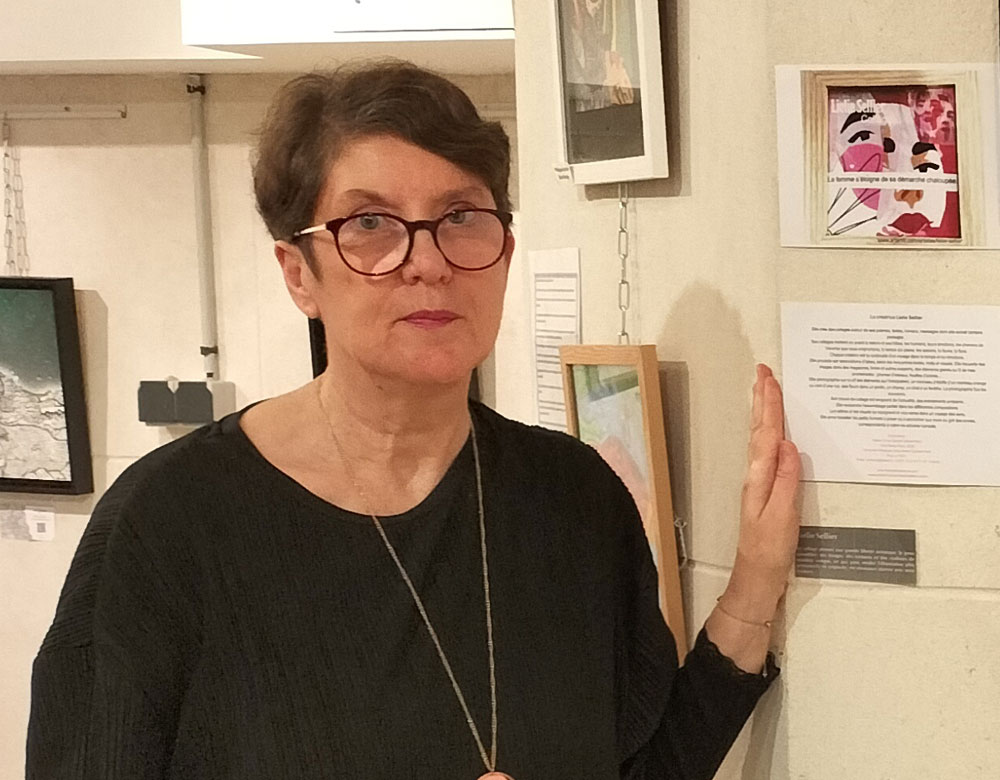
Your new series “Femmes bouleversées” explores the complex inner lives of women. What inspired you to focus on this theme, and how do you approach portraying these emotions visually?
The feminine universe has always inspired me. Through my collages, I seek to explore the complexity of women’s inner lives, their strength, their struggles and their aspirations. My daily observation of the women around me – friends, family, strangers I meet at random – fuels my thinking. I listen to their stories, capture snippets of conversations, immerse myself in testimonies that reveal their concerns and desires.
Today, I feel an urgency to address these themes, because in some parts of the world, women’s rights are regressing. Emblematic figures such as Simon Veil, Simone de Beauvoir, Gisèle Halimi and in the USA for example, Gloria Steinem fought for fundamental advances; it is essential not to lose this hard-won ground. It is therefore with this awareness that I decided to create the series “Femmes bouleversées”, which highlights the challenges, tensions and emotions that run through women’s lives.
In my work, I address subjects that particularly interest me: the biological clock and the pressure of time, the dictates of seduction, the mental burden that weighs on us every day, the temptations to which we sometimes give in in order to breathe and find ourselves. These moments when we lay down our arms to abandon ourselves to ourselves are also essential moments of humanity.
Visually, I translate these emotions by integrating various symbolic elements: a clock to evoke temporality and the injunction of time, a world map to situate these struggles in a global framework, a butterfly for rebirth, a bird for escape. The contrast of colors, the alternation between black and white and bright hues, as well as the use of my own photographs in the background, create a dialogue between the intimate and the universal.
With this series, I want to provoke reflection and provoke an echo in those who will stop in front of my work. Because beyond the images, it is a conversation about the feminine condition that begins, an invitation to observe, to listen and to never stop questioning the world around us.
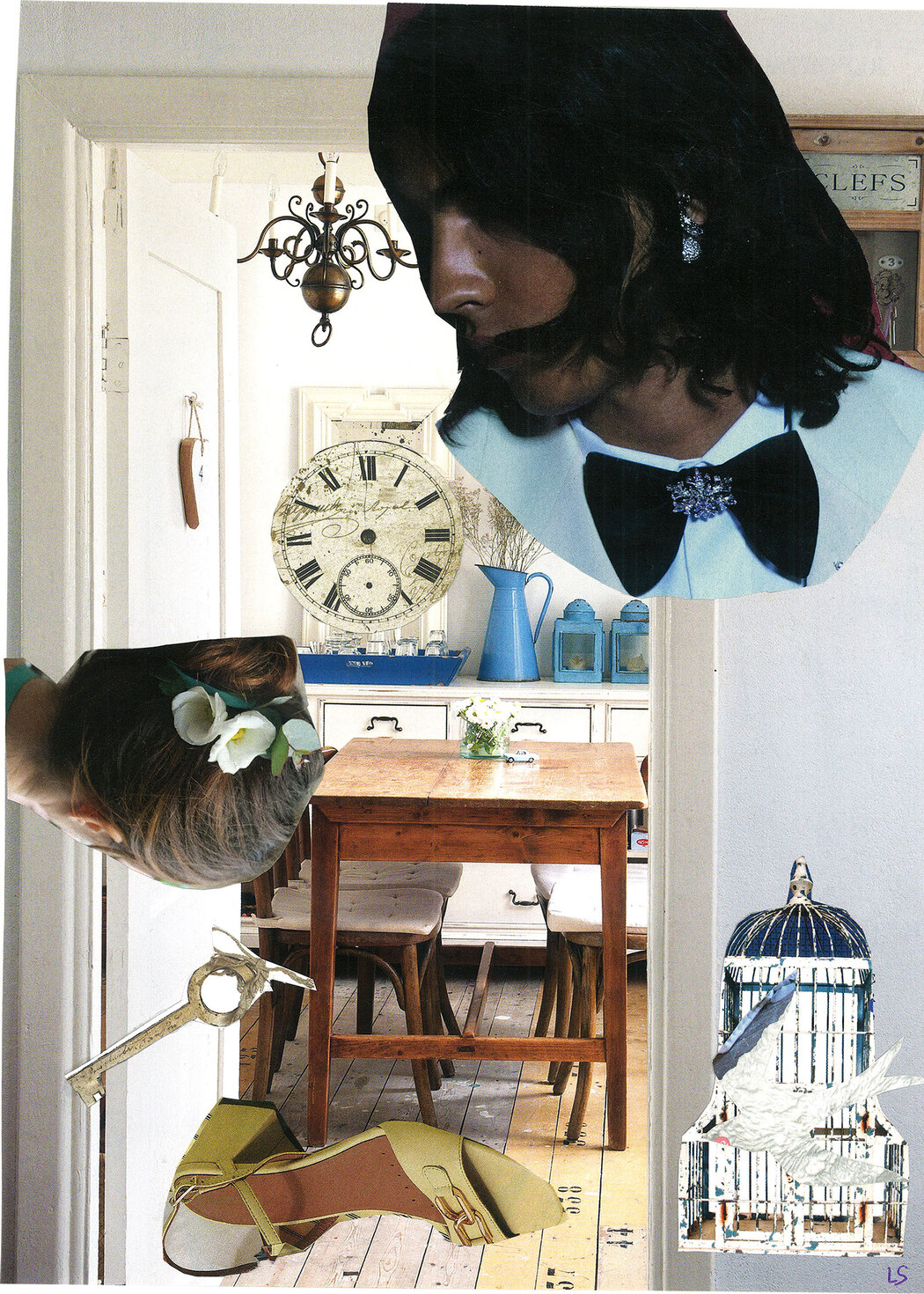 Lielie Sellier | Injonctions | 2024
Lielie Sellier | Injonctions | 2024
How does your background in Art History and spontaneous writing influence your collage work and creative process?
My training in art history is an essential basis in my collage work. It has offered me a wide range of interpretations of the female figure throughout the centuries, thus enriching my reflection on the representations and symbols associated with women. This knowledge nourishes my vision and influences my aesthetic choices, allowing me to deconstruct and reinvent these images through collage.
In addition, my spontaneous writing acts as a bridge between my emotions and my visual compositions. It allows me to capture and translate into images the feelings that listening to and observing women inspire in me. Thus, my collages become a sensitive and intuitive expression, where artistic memory and personal feelings mingle, giving birth to my series Femmes Bouleversées.
In your compositions, you often mix personal photography with collage. How do you decide which photos to incorporate, and what do you feel they add to the overall narrative?
When I walk, my look is drawn to everyday elements that resonate with me: a silent street, a frozen clock, a dancer’s dress behind a window, the flickering light of a street lamp, or the melancholy view of a deserted train platform. Each photograph I capture becomes a trace, a fragment of memory that can later dialogue with my collages.
When I compose a work, I select these images according to the feminine emotion I wish to express. A black and white photo, for example, can contrast with colored elements of the collage to evoke tension, duality, depth. It serves as an anchor for the composition, bringing an additional narrative dimension and an intimate resonance to the whole.
Thus, the integration of my own photographs is not limited to an aesthetic question; it enriches the overall story by infusing it with a part of experience, feeling, and intuition.
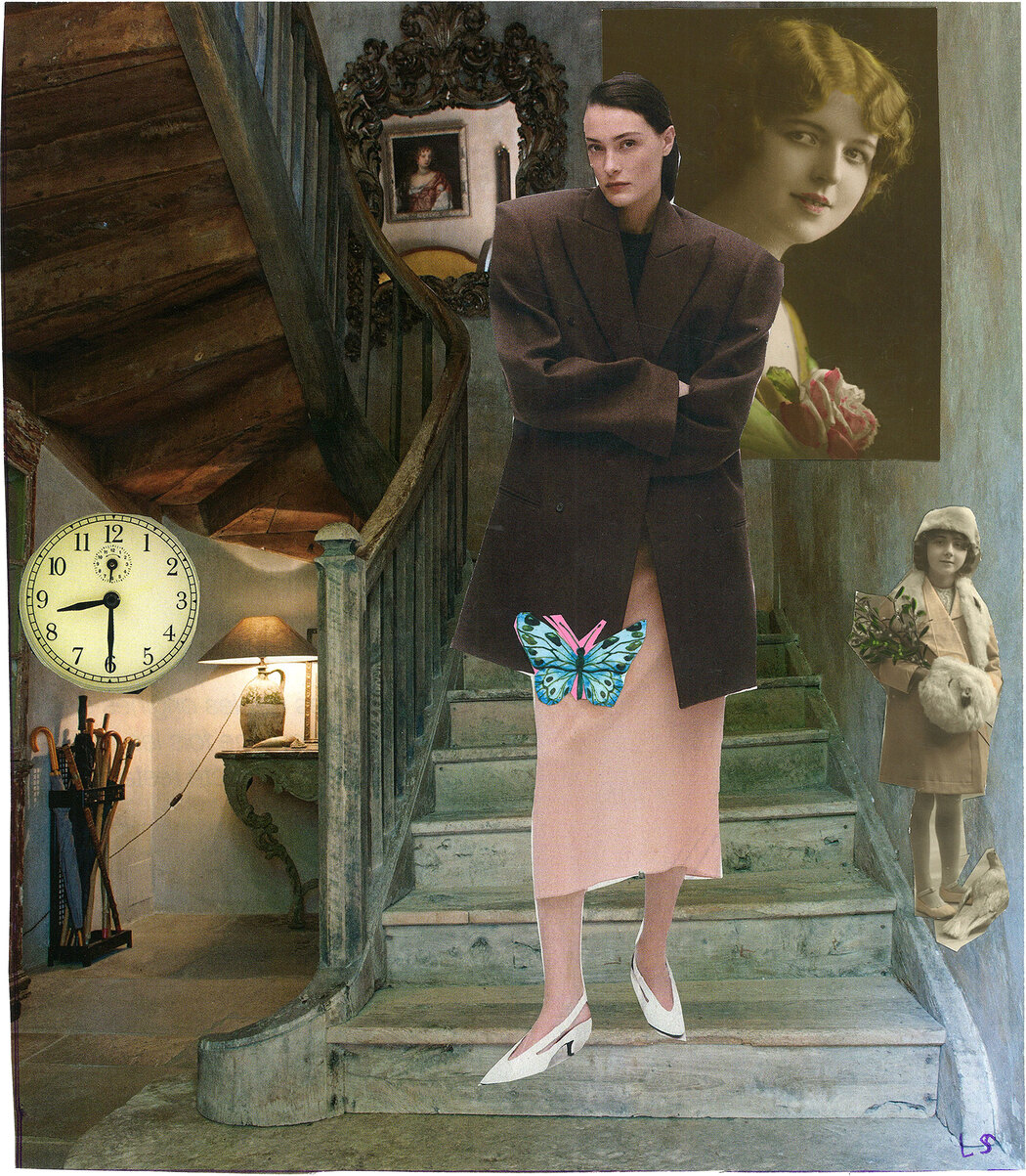 Lielie Sellier | Generations | 2025
Lielie Sellier | Generations | 2025
The tension between external pressures and internal resilience is a recurring theme in your work. How do you balance these two elements in your compositions?
In my collages, I balance the tension between external pressures and internal resilience by juxtaposing elements that dialogue with each other, creating visual and narrative contrasts. For example, in Silent solitudes, a woman in a black evening dress seems to fall from the ceiling or a window, while another woman – her double, perhaps – sits peacefully, with a pot of paint brushes at her side. This scene illustrates a moment of change: the finery is abandoned (black dress, pumps), giving way to a simpler, freer outfit. It is a breath, a transition, a necessary step back before moving forward into a new day. The animal that passes through the composition reinforces this idea of instinct and natural movement.
Your use of light and texture creates a rich emotional depth in your works. Can you talk more about how you play with these elements to evoke specific feelings in your audience?
In my work, light and texture play an essential role in conveying emotions and nuances of moods. Just as light evolves throughout the day, feminine emotions go through subtle variations, between bursts and shadows, softness and intensity. I like to play with these contrasts to suggest moments of fragility, strength, or transformation.
As for textures, they enrich this emotional depth. Paper, cardboard, the addition of various elements become so many layers, symbolic layers representing the complexity of feelings. A rough surface can evoke a wound, while a translucent paper suggests a lightness or an impression of evanescence.
By combining light and texture, I invite the viewer’s gaze to dive into my collages, to feel these sensitive variations, and to be touched by the inner stories they reveal.
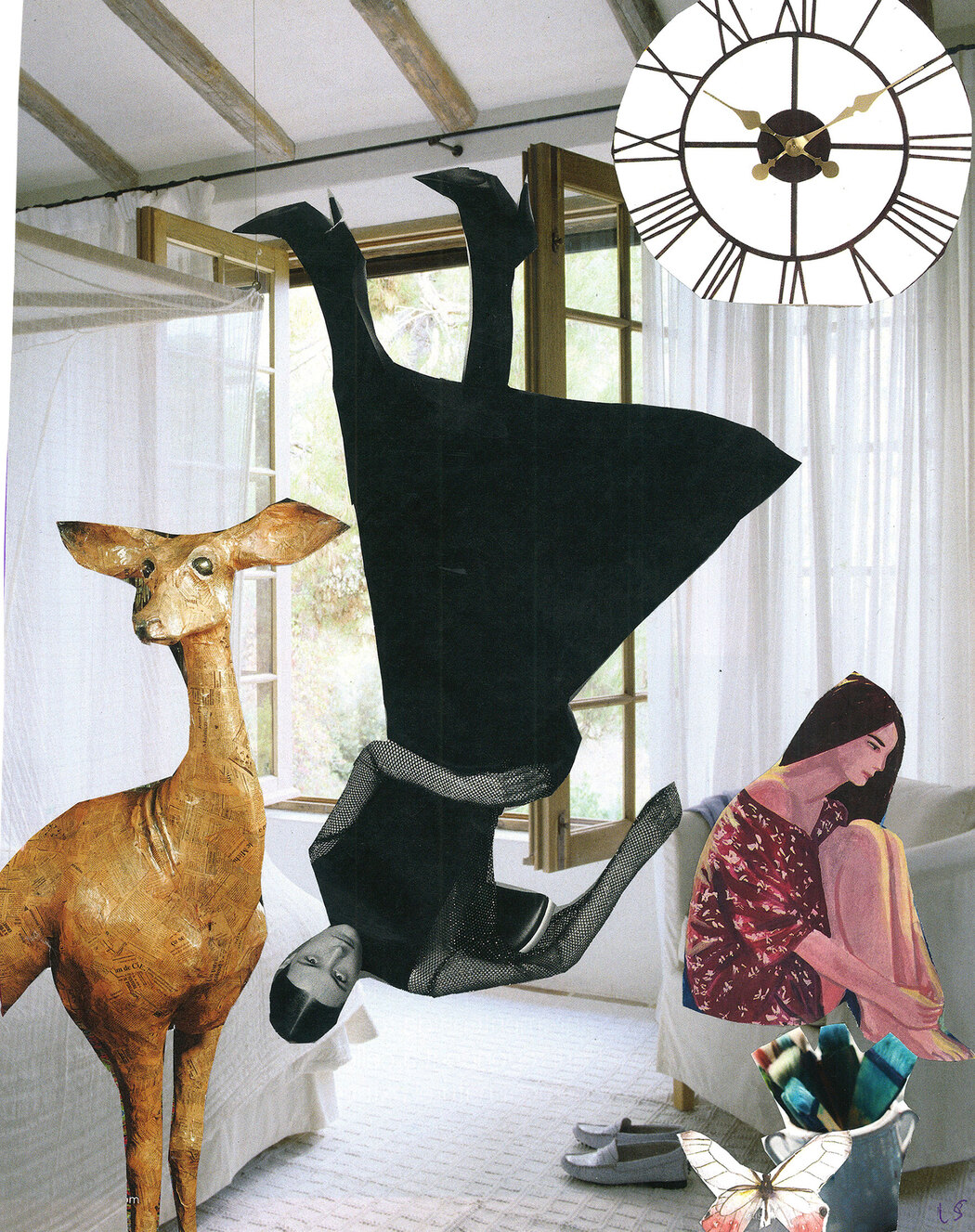 Lielie Sellier | Silent Solitudes | 2024
Lielie Sellier | Silent Solitudes | 2024
You’ve exhibited both in France and internationally. How do you feel the reception of your work differs in different cultural contexts?
The reception of my work does not depend so much on the cultural context as on the personal journey of each viewer. It is the past, the present, the future, the intellectual baggage and the experience of each person that influence their view of my collages.
When faced with my work, some will see an intimate resonance, an echo of their own experiences, while others will perceive a different narrative, guided by their sensitivity and their history. Emotion, however, remains universal, even if it is expressed differently depending on the person.
Thus, beyond borders, it is these encounters between the work and the viewer that give my work a multitude of interpretations, each one as legitimate as the other.
What role does nature play in your art? How do you connect it with the themes of femininity and emotional complexity that you explore?
Nature occupies an essential place in my work, both by its symbolism and by its evocative power. It is a metaphor for the feminine emotions that I explore: changing, cyclical, sometimes gentle and soothing, sometimes wild and untamable.
The flowers, trees, water, and natural elements that I integrate into my collages translate this emotional complexity. A flower can represent fragility and resilience, birth, a rebirth, a wave evokes an inner upheaval, a misty landscape suggests a moment of doubt or introspection.
Like nature, femininity is in perpetual transformation, marked by its own contrasts and rhythms. By mixing these organic elements into my compositions, I seek to express this inner strength that, despite the storms, always finds a path to the light.
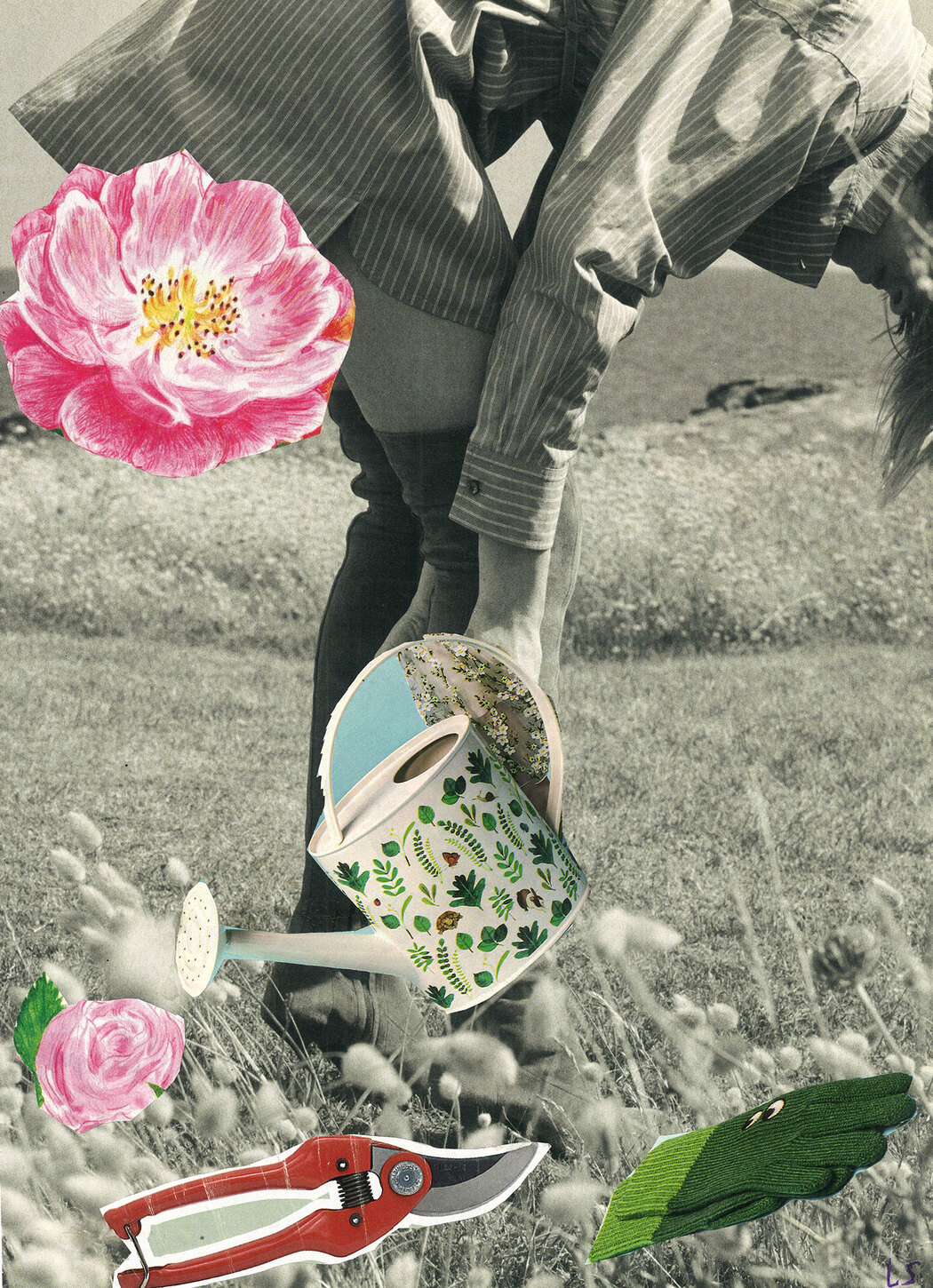 Lielie Sellier | Symbiosis | 2024
Lielie Sellier | Symbiosis | 2024

Leave a Reply